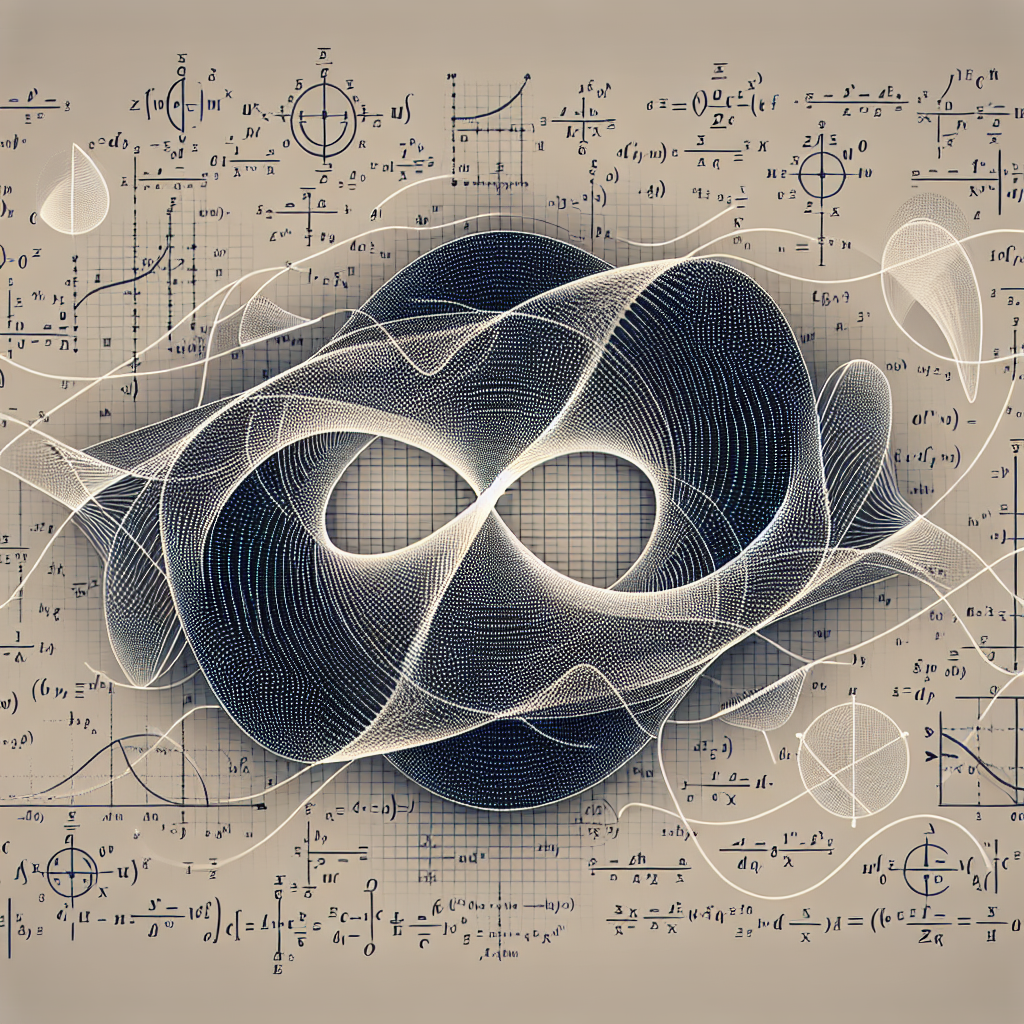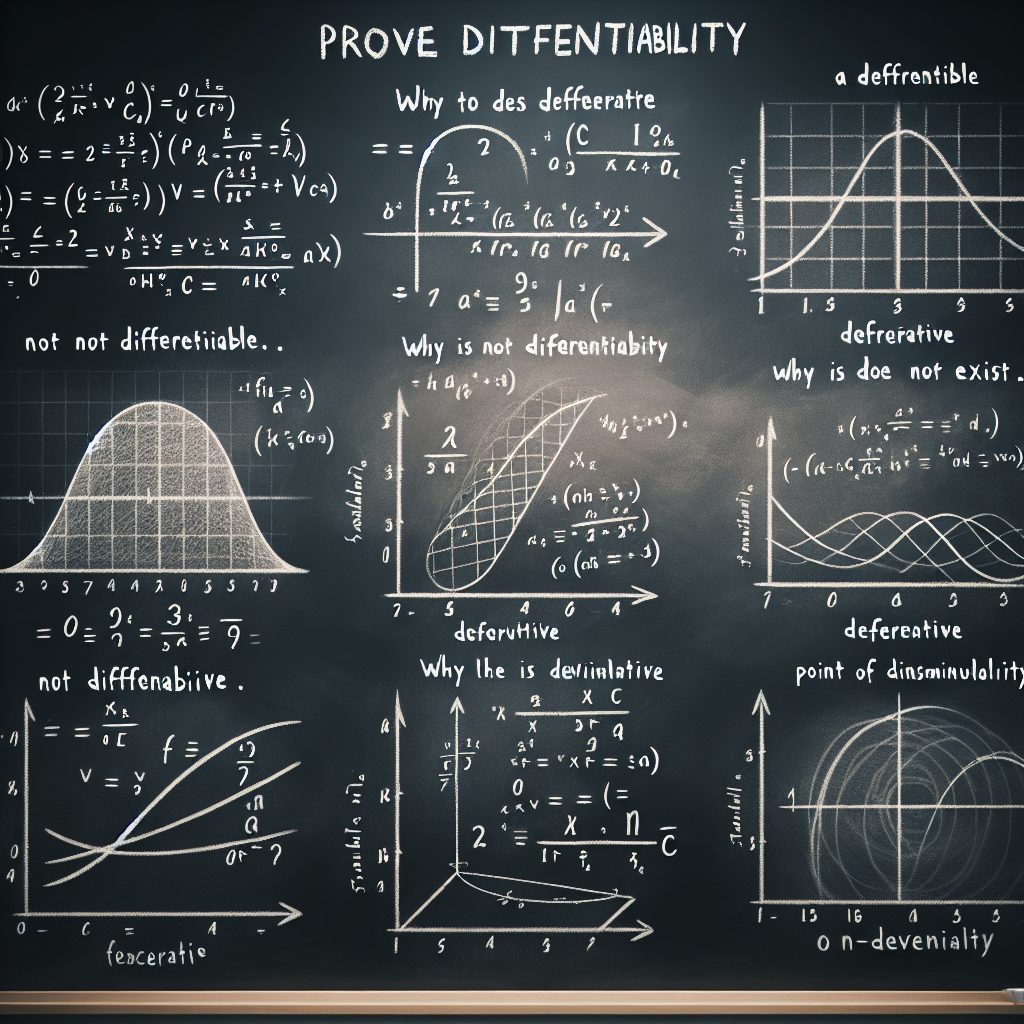In the realm of calculus, the concept of a differentiable function plays a pivotal role. It's a cornerstone of understanding how quantities change and evolve.
But what exactly is a differentiable function? In simple terms, it's a function that has a derivative. This means it can be smoothly and precisely graphed, with no abrupt changes or breaks.
This article aims to delve into the properties of differentiable functions. We'll explore what it means for a function to be differentiable, and how this concept is applied in various fields.
We'll also discuss the intriguing concept of a function being twice differentiable. This involves a deeper understanding of the function's behavior and its graphical representation.
Whether you're a student, an educator, or a professional in a field that uses calculus, this exploration of differentiable functions will offer valuable insights. Let's embark on this mathematical journey together.
Understanding Differentiable Functions
A differentiable function is a function whose derivative exists at each point in its domain. The derivative of a function at a certain point gives the slope of the tangent line at that point.
This concept is crucial in calculus. It allows us to understand how the function behaves, how it changes, and how it responds to different inputs.
For instance, consider the function f(x) = x^2. This function is differentiable because its derivative, f'(x) = 2x, exists for all real numbers x. The derivative tells us how quickly the function is changing at any given point.
However, not all functions are differentiable. Functions with sharp corners, vertical tangents, or discontinuities are not differentiable at those points. For example, the absolute value function, f(x) = |x|, is not differentiable at x = 0.
Understanding the concept of differentiability is key to mastering calculus. It provides a foundation for further exploration of more complex mathematical concepts and applications.
The Core Principle: Derivatives and Differentiability
The derivative of a function is a fundamental concept in calculus. It measures the rate at which a function is changing at a given point. In other words, it gives the slope of the tangent line to the function at that point.
For a function to be differentiable at a point, it must have a derivative at that point. This means that the function must be smooth and continuous, without any sharp corners or discontinuities.
Consider the function f(x) = x^3. Its derivative, f'(x) = 3x^2, exists for all real numbers x. This means that the function f(x) = x^3 is differentiable everywhere.
However, the function g(x) = |x| is not differentiable at x = 0. This is because the function has a sharp corner at x = 0, and the slope of the tangent line is not defined at that point.
Understanding the relationship between derivatives and differentiability is crucial in calculus. It allows us to analyze and predict the behavior of functions, and to solve complex mathematical problems.
Differentiability vs. Continuity: What's the Connection?
Differentiability and continuity are two key concepts in calculus. They are closely related, but they are not the same.
A function is continuous at a point if it does not have any jumps, breaks, or holes at that point. In other words, you can draw the function without lifting your pen off the paper.
On the other hand, a function is differentiable at a point if it has a derivative at that point. This means that the function is smooth and does not have any sharp corners at that point.
However, it's important to note that differentiability implies continuity, but not the other way around. If a function is differentiable at a point, it must be continuous at that point. But a function can be continuous at a point and not be differentiable there.
Visualizing Differentiable Functions
Visualizing differentiable functions can help us better understand their properties. A graph of a differentiable function is smooth, without any sharp corners or cusps.
When we say a function is differentiable, it means we can draw a tangent line at any point on the function's graph. This tangent line gives us the slope of the function at that point, which is the derivative of the function.
The graph of a differentiable function is often used in calculus to illustrate concepts such as rates of change and optimization problems. It's also used in real-world applications, such as physics and engineering, to model various phenomena.
In the next sections, we will delve deeper into the properties and applications of differentiable functions.
Real-World Applications of Differentiable Functions
Differentiable functions play a crucial role in various real-world applications. In physics, they are used to model motion and change.
For instance, the velocity of an object is the derivative of its position function. The acceleration is the derivative of the velocity function. This shows how differentiable functions help us understand the dynamics of moving objects.
In economics, differentiable functions are used to model cost and revenue. The derivative of a cost function gives the marginal cost, which is the cost of producing one more unit of a good. Similarly, the derivative of a revenue function gives the marginal revenue, which is the revenue gained from selling one more unit of a good.
In engineering, differentiable functions are used to design curves and surfaces. For example, in computer-aided design (CAD), differentiable functions are used to create smooth and continuous shapes.
In machine learning, differentiable functions are used in optimization algorithms. The goal is to find the minimum or maximum of a function, which is achieved by finding where the derivative is zero.
These examples illustrate the importance of differentiable functions in various fields. Understanding differentiable functions can provide valuable insights into many real-world phenomena.
Twice Differentiable Functions: A Deeper Dive
A function is said to be twice differentiable if its derivative is also differentiable. This means that we can take the derivative of the function twice.
The second derivative of a function provides valuable insights into its behavior. For instance, it tells us about the concavity of the function.
If the second derivative is positive at a point, the function is concave up at that point. If it's negative, the function is concave down.
This information is useful in identifying local minima and maxima. A function changes from concave up to concave down at a local maximum, and vice versa at a local minimum.
Let g be a Twice Differentiable Function: Implications and Examples
Consider a function g that is twice differentiable. This means that not only can we find g', the first derivative, but we can also find g'', the second derivative.
The first derivative g' tells us about the rate of change of the function. It gives us the slope of the tangent line at any point on the function.
The second derivative g'' tells us about the rate of change of the rate of change. It gives us information about the curvature of the function.
For example, let g(x) = x^3. The first derivative g'(x) = 3x^2, and the second derivative g''(x) = 6x. This function is twice differentiable, and its second derivative tells us that the function becomes more curved as x increases.
The Graph of a Twice Differentiable Function: What Does It Show Us?
The graph of a twice differentiable function can show us many things. It can show us where the function is increasing or decreasing, and where it has local maxima or minima.
The graph can also show us points of inflection. These are points where the function changes concavity, from concave up to concave down, or vice versa.
For example, consider the function f(x) = x^3 - 3x^2 - 9x + 5. Its graph shows that it has two points of inflection, and it changes from concave up to concave down at these points.
Understanding the graph of a twice differentiable function can help us better understand the behavior of the function. It can provide valuable insights into the function's rate of change and curvature.
Proving Differentiability: Techniques and Examples
To prove that a function is differentiable, we need to show that its derivative exists. This involves using the definition of the derivative and applying some calculus techniques.
For example, consider the function f(x) = x^2. To prove that it's differentiable, we can find its derivative using the power rule. The derivative f'(x) = 2x exists for all real numbers, so f(x) is differentiable.
Sometimes, proving differentiability can be more complex. For instance, piecewise functions require checking differentiability at each piece separately.
For a function to be differentiable at a point, it must be continuous at that point. However, continuity does not guarantee differentiability.
Understanding how to prove differentiability is crucial in calculus. It allows us to apply various theorems and techniques that require the function to be differentiable.
The Significance of Differentiable Functions in Mathematics
Differentiable functions play a vital role in mathematics, particularly in calculus. They allow us to analyze rates of change and understand the behavior of functions.
These functions are also crucial in various real-world applications. From physics to economics, differentiable functions help us model and predict phenomena.













.jpg)




0 Comments